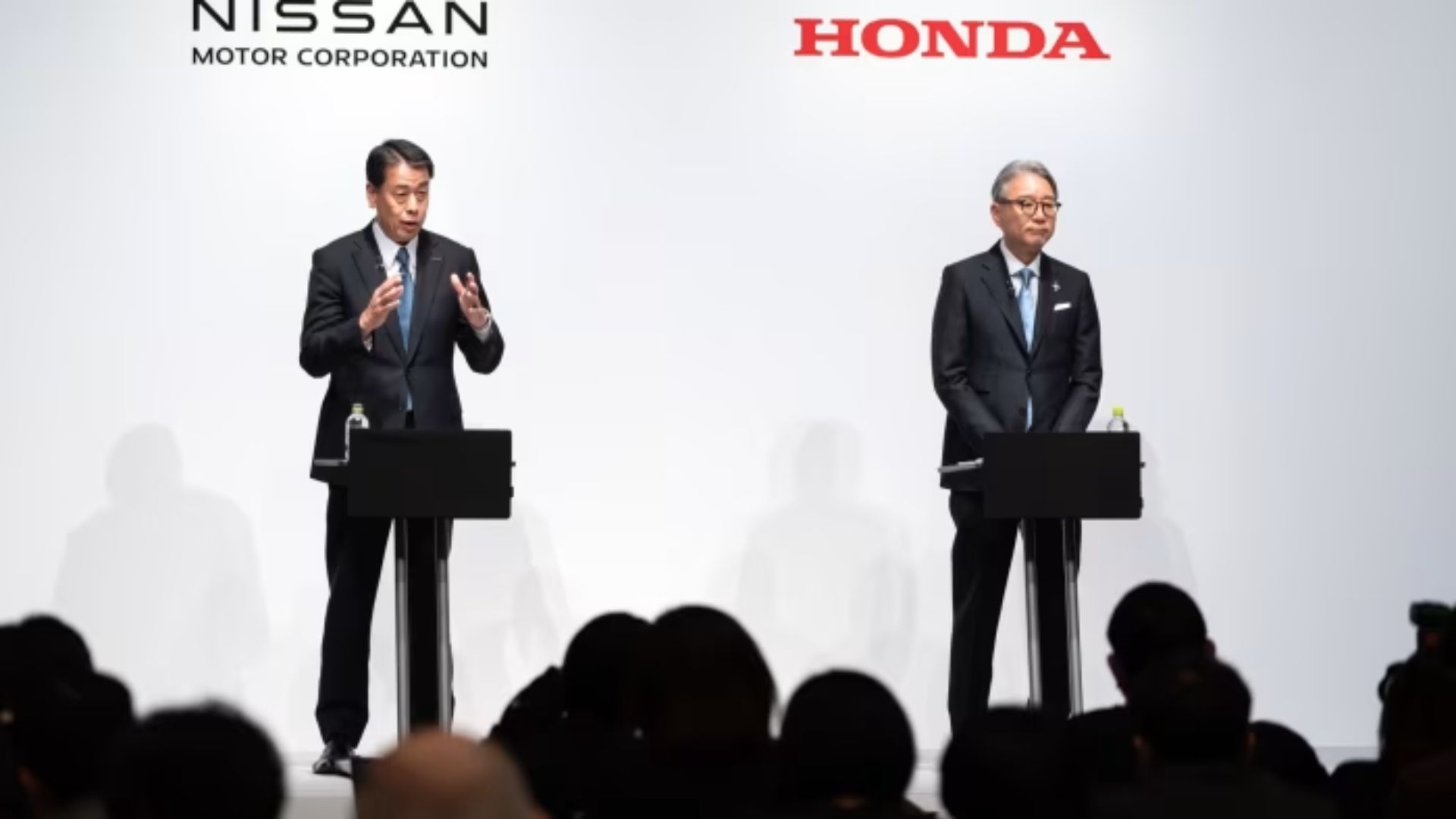
Japan’s two biggest carmakers forge partnership in face of competition from China’s low-cost manufacturers.
Honda and Nissan will team up to develop electric cars, days after Volkswagen said it may collaborate with Renault, as traditional carmakers combine forces in the face of the threat from Chinese EVs. Japan’s second- and third-largest carmakers putting aside their historic bitter rivalry comes as the established industry is bracing itself for the coming wave of high-tech, low-cost models from China. “The rise of emerging players is becoming faster and stronger. Companies that cannot respond to the changes will be wiped out,” said Honda’s president Toshihiro Mibe. “We held our discussions from the viewpoint of whether we can continue to be a top runner or even survive in 2030.” Carmakers from America to Europe to Asia are already facing rising costs from new technology development and tougher emissions rules, while also struggling to develop cheap electric vehicles that they can sell profitably. Once a laggard in the auto world, China is using its lead in battery technology and knowledge of carmaking gleaned from international manufacturers to produce next-generation EVs, which have been designed for export to the world’s automotive heartlands. The chief executives of the two Japanese groups on Friday said the scope of their co-operation would include software, core EV components and auto intelligence technology. The agreement only came in the form of a non-binding memorandum of understanding, raising questions among analysts about the extent of their commitment.
Nevertheless, the companies said they were not considering a capital tie-up for now but did not rule out the possibility. “All of these discussions will take place from now,” said Nissan’s chief executive Makoto Uchida. “There is no time to sit back and relax.” Nissan and Honda, which each sell about 4mn vehicles a year globally, hope to bring down costs by pooling their resources. They were caught off-guard by the rise of China’s homegrown EV groups such as BYD, which outsold Tesla for the first time in the final quarter of 2023. Shares in Honda rose 1.7 per cent while Nissan jumped 3.2 per cent ahead of Friday’s announcement. Honda already has an alliance with General Motors to use its battery technology, though it did not specify whether this partnership would be affected.
Their announcement follows VW’s confirmation this week that it was in talks with France’s Renault to pool resources to develop lower-cost EVs. The pair will decide in the coming months whether they will push ahead to develop a vehicle that can be made in Europe and sold profitably for under €25,000. The deal with Honda came after Nissan last year reached a deal to rebalance its capital relationship with its long-term alliance partner Renault. As part of the agreement, the French carmaker reduced its 43 per cent stake in Nissan, while the Japanese group gained voting rights for its own 15 per cent holding in Renault. The alliance also includes smaller partner Mitsubishi Motors. “This partnership with Honda is evidence that all the various efforts Nissan made with its alliance partners Renault and Mitsubishi Motors did not bear any fruit,” said Koji Endo, head of equity research at SBI Securities. “It seems like an act of desperation but it’s unclear whether the engineers of Nissan will be able to work together with Honda engineers.” The Japanese government figures had tried to bring Nissan and Honda together for merger talks at the end of 2019, amid fears that Japan’s vast car manufacturing base was losing its edge as the shift towards EVs unleashed greater competition. But the project fizzled after both sides immediately rejected the idea. Honda officials, in particular, pushed back, pointing to Nissan’s complex capital structure with Renault, one person who was close to the talks said at the time. Nissan was equally opposed to the idea as the group focused on getting its existing alliance back on track.
Fuente de nota e imagen: https://www.ft.com/content/ba9d43aa-b1ab-4244-82b2-7bd12d3799ac

